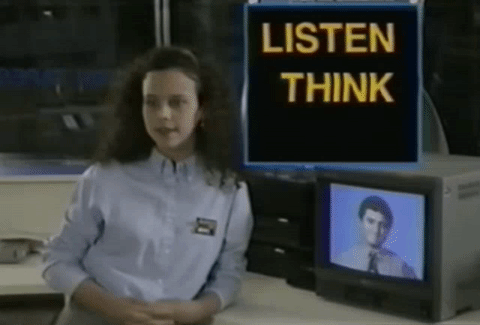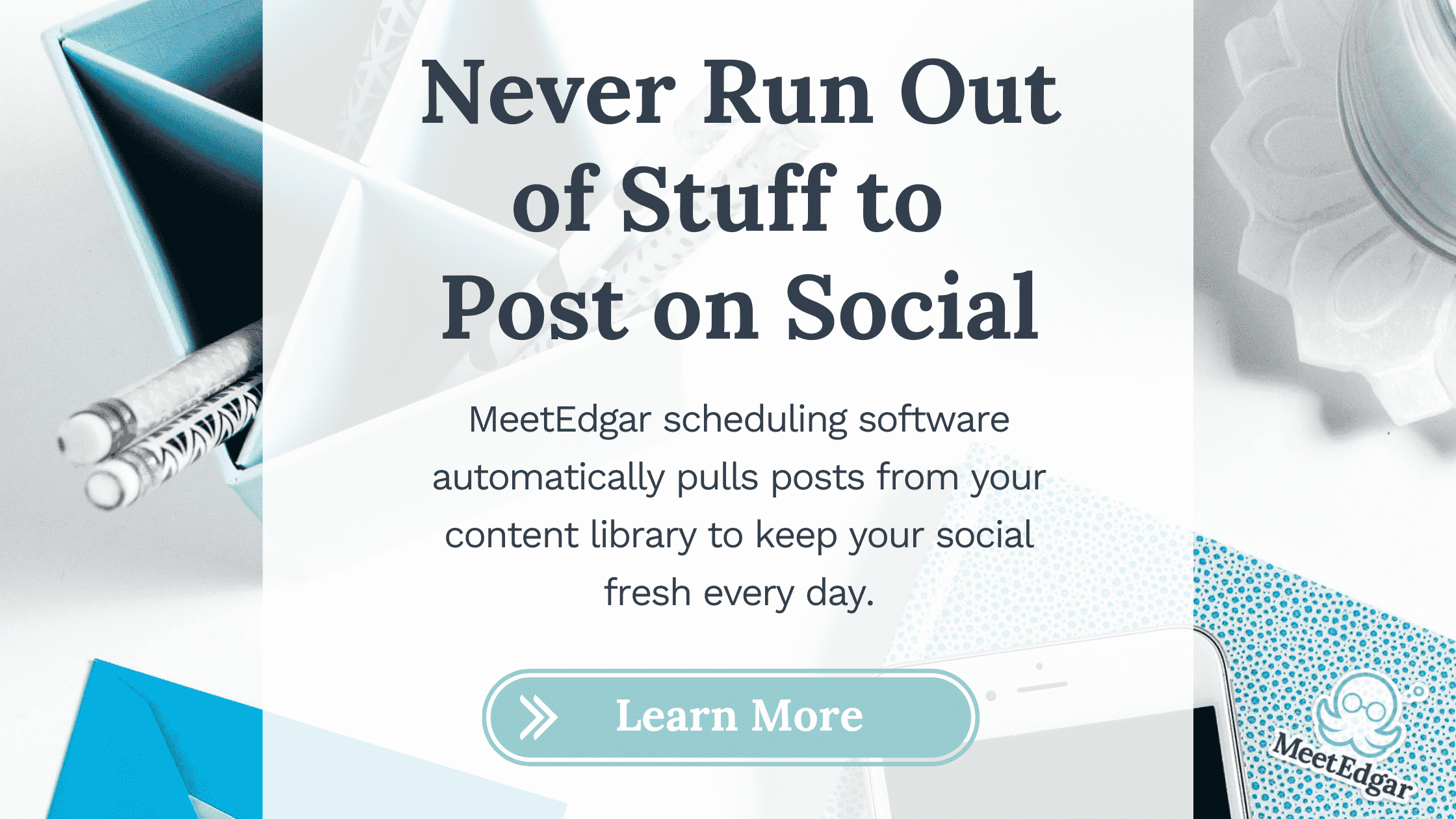Laura Roeder, Meet Edgar’s founder, knows a thing or two about how to build a million dollar business. She built a business worth seven figures within five years of starting it.
She has led virtual teams from around the globe for the past decade and knows all about leaping into the unknown.
Here she shares her lessons learned on the journey to building a business worth 7 figures. From strategic thinking to money mindset and managing a remote team, she has you Toith everything you need to know about how to make 7 figures with your new venture.
How To Master Your Money Mindset to Make 7 Figures
If your goal is to build a million dollar business, you need to do a lot of conscious work on “money mindset”.
What does this mean? It means feeling OK with making money, spending money, and charging a fair rate for your work. And “money stuff” goes so much further than just money – it also encompasses thoughts about deserving, ease, and your own personal self-worth.
In order to develop a positive money mindset, you need to overcome your biggest blocks to wealth and raise your wealth setpoints. One of the best courses out there about money mindset is, The Lucky Bitch Money Bootcamp.
The course helps you to find out more about things like:
- Why basing your prices on the other people in your industry can be a huge mistake
- How you need to change your money mindset from the one your parents taught you
- Why doing something you love and earning lots of money shouldn’t be mutually exclusive
- How guilt stops lots of entrepreneurs from reaching their real earning potential
So before you start building your 7 figures company, get your money mindset in shape!
Learn to Make Mistakes
Being ok with failing is part of the mindset you require if you want to build a multi million dollar business. Learning lessons the hard way isn’t a bad thing – it’s what gives you the knowledge and the tools to improve!
However, there are some generic mistakes you can avoid making. Here are five common mistakes small, first-time business owners make and WHY you should avoid them at all costs.
Not Investing In Your Business
Many business owners get stuck in this rut of trying to do EVERYTHING themselves. Their workdays are FULL of their business. They’re one-(wo)man teams – CEOs, project managers, copywriters, tech support, and customer service all rolled into one single person, who’s still only got 24 hours in a day.
They’d love to expand their businesses, improve their schedules, and feel more at ease. But the fact of the matter is that there’s only JUST enough money coming in to make ends meet, and pausing to evaluate seems not only impossible but irresponsible.
The thought of spending a single dollar more than necessary can seem like business suicide. But the reality of the situation can’t be avoided for long — there’s really only so much that you can achieve alone. And if your business goals are to be BIGGER than you currently are, but you’re already stretched too thin… well: it’s time to do some smart investing in your business.
SMART investing means spending money on something that will actually help you grow your business. This means NOT buying quick-fix solutions and NOT spending the money on a training program that you can’t be bothered to complete. Think you’re all out of time, and THAT’S the problem? Think again.
No, SMART investing means considering where you can spend to help your business run more efficiently so that you can focus on bigger and better tasks. It means investing in tools that help your business grow, then actually taking the time to make sure those tools are put to good use.
And occasionally, it means paying the extra hundred (or even thousand!) dollars to pay for a real solution over the cheap $10 DIY option that’ll have you cursing long after work hours for the next several months.
Maybe, in your case, it’s spending the money on a monthly service that helps you with your taxes. Maybe it’s a training program. Maybe it’s bringing on a new team member, buying a new piece of technology, or expanding into a new office space.
It’s easy to see it retrospectively, but don’t waste time hemming and hawing over pennies. The sooner you start investing (wisely) in your business, the sooner you’ll become the 7 figures company you want to be.
Feeling Bad About Promoting Your Business
When it comes to selling, there are definitely people out there who are overdoing it… but there are FAR more people who insist that self-promotion isn’t their “thing.” Guess what? If you want to get ahead, you should consider making it your “thing”!
Self-promotion. Promoting your business means helping to spread your ideas and your expertise. Self-promotion doesn’t cut other people down; instead, it makes other people feel good. It adds value to the people you’re communicating with, and it’s done with integrity. And you don’t even have to be a “super sales-y” person to do it.
Look at it this way: let’s say you’re having a sale on a new product. If you only tweeted about it twice, what do you think the chances are that everybody who follows you actually SAW you talk about it? The chances are that most people who follow you never saw you mention your sale a single time. Up your chances of getting your message out there by varying the times of day you post and the wording you use to share your message.
Ignoring Your Sales Metrics
When you’re busy running your business’s day-to-day, seeing sales continually tick in or watching your online following flourish is typically enough to quell that nagging thought in your mind that tells you should be more on top of your metrics.,
You’re perfectly fine humming along with what you’re doing, ignoring the data and the actual financial numbers because — look! — some people retweeted your last tweet and you made a bunch of sales last month. How many? You dunno! But it was enough to pay the bills, as it is most months, so you must be doing something right . . . right?
Even the most oblivious business owners eventually notice when sales drop off, or their blog traffic comes to a grinding halt. But how many business owners are running the day-to-day with blinders on, not noticing at ALL that their business is actually stagnant?
Looking forward is always the right attitude, but without any context of the health of your business month over month, how do you know you’re moving forward instead of just jogging in place? So many business owners have spent way too much time in that zombie-like trance you get into when you’re just focused on keeping the ball rolling.
In this state of mind, the only thing that might snap you out of it is seeing sales suddenly STOP or watching your blog traffic take a huge dip. And wouldn’t it be awesome to be able to see something like that coming in advance?
For the busy biz owner, without a little nudge from some good old-fashioned tracking, you might not get shaken into action until you feel that stomach-dropping jolt that comes when you watch your bank balance take a “sudden” nosedive.
At first, collecting, tracking, and analyzing data might sound like a big scary task, but let’s get real. Is building a few spreadsheets and running some Google Analytics REALLY scarier than having NO idea whether or not you’re meeting your business goals?
Even if you’re not a naturally data-inclined person, you’ll be
amazed by how many complex questions can easily be answered by a quick search through KISSmetrics.
If you’re new to tracking and metrics, how about starting with some baby steps? Check out our Google Analytics Cheat Sheets to get you up and running with some basic metrics in 20 minutes or less.
Not Split Testing Anything
When you’re a small, bootstrapped business, you might assume that you’re just not big enough to think about marketing strategies.
WRONG. The truth is, small businesses stand to gain SO much from optimization and streamlining their marketing campaigns. Regardless of the size of your business, doubling or even tripling your sales just by changing a few variables on a sales page has a HUGE impact. And even more so for the small boutique business than the fancy-pants global corporation.
Split testing (aka A/B Testing) is one tool that small businesses can utilize without having to have a big ol’ marketing department backing them up. Using tools likeVisual Website Optimizer or Optimizely, it’s quick and easy to set up a test, even if you’re short on time, money, and brainiac coding skills.
Testing out the basics like opt-in box placement or sales page copy is the quickest and easiest way to determine what your audience actually responds to for certain, rather than just in theory.
One of the BEST places for small bootstrapped businesses to begin optimizing the sales funnel is by split testing various elements of your email marketing campaign.
This is particularly crucial if your website traffic isn’t quite high enough to generate a super-dependable result on one of your site’s pages.
Email marketing tools likeAweber and Mailchimp have built-in functionality to help you set up split testing.
Test various options within your emails (subject lines, the name in your “from” fields, various types of copy that lead to your sales page) and work on really getting as many people to click through to your landing page as possible.
Waiting For Everything to Be Perfect
All too often, business owners are cautious about releasing their goods and services into the world because they’re not “ready.” And because “ready” isn’t a real destination, avoiding action until you get there means you’ll never act.
The single most common reply to advice like pitching yourself to a podcast or making connections with your industry’s leaders via social media is something along the lines of “AHHHH! Are you nuts?! I’m nowhere near ready!”
Of course, the feeling of being imperfect in a world where everybody seems a hundred steps ahead of you is valid. But “IF NOT NOW, THEN WHEN?”
When you’re building a million dollar business, you have no idea which ideas will be well-received, which ones will be reincarnated into bigger and better ideas, and which ones are really just meant to bite the dust. You could hide away your ideas and projects until they are “perfect,” but there is a point where enough is enough, and having NOTHING to offer potential clients costs more than releasing an offering that isn’t 100% perfect.
Move forward with the plans that will be the most useful to small business owners. There will be times you’ll be down one path, only to find out that your customers are looking for something else. So, research and adapt.
And guess what? That program you’re obsessively tweaking before you can sell? That blog you’ve got to find the perfect font for before you can send traffic to? They can BOTH be fixed, improved, and optimized AFTER they launch.
Continually stabbing forward, testing an imperfect product, staying tuned in, and adjusting course as needed is a much better plan than staying in one place forever polishing your never-quite-ready-to-ship product.
Want to listen to some seven-figure tips? Check this out:
How to Work Remotely
If you’re starting a million dollar business remotely, there are a few extra challenges to overcome.
When you are leading a virtual team, it’s no secret that there is a lack of personal interaction. No one wants to be out in ‘la-la land’ all by themselves when working on a team. To be an effective leader, you need to stay connected with your people.
Make sure you touch base at least a few times a week with your team members…even if it is a short email. If you aren’t using a project management app like Basecamp, have team members send you a daily recap of:
- What they accomplished today
- What they will work on next
- What questions they need answered to move forward
Here are some other ways to keep your sanity while building a million dollar business remotely.
Get Out of the House
As a business owner, it’s essential to stay inspired. To do this, you should get out of your slippers at least a few days a week. Even if your team members are scattered all over the world, you can gather up a group of local, like-minded business owners to share ideas. Take it a step further and meet up in an interesting location to help spark creativity.
Lead by Example
Treat your team members the way you want to be treated. Be quick to answer questions. Be reliable. Be available; your team members will follow your lead.
Help Mentor Your Team Members
Embrace the opportunity to be an influential leader in teaching what you know to other team members. Ask team members what they want to do in the future and help them achieve their goals. You will feel great making a positive impact in their lives.
Find Ways to Connect…Virtually
Think of creative ways to connect your virtual team. Share music playlists or connect on social media. You could even have a virtual cup of coffee with an employee over Skype. Never stop building your relationship with your team. Building loyalty pays rewards time and time again.
Get Together Face-to-Face (when you can)
At least once a year, try to get everyone together in one place to talk about the business’ goals. Use this time to connect on a personal level and have some fun. Afterward, watch as the team dynamics and productivity skyrocket.
Give Praise
Take the time to give thanks to the people that are helping you. The management philosophy of “a compliment is the most affordable gift you can give someone” still applies in the virtual world.
Learn Continuously
When you open up your mind to new ideas, technology, and processes, amazing things happen. Never stop learning, keeping in mind that some things are best learned by trial and error.
Document Everything.
Do your best to document as much as you can and require your virtual employees to do the same. This includes your business processes, passwords, ideas, and work-related files. You can use free cloud-based apps like Dropbox and Google Docs to make sharing documentation easy. Think of documentation as your company’s asset and insurance policy.
Make life easier for new hires
When you only hire one person every few months, bringing them up to speed isn’t necessarily that difficult. Sure, it’s work, but it’s gonna be a long time before you have to do it again for someone else!
Unless, you know, it isn’t.
When you’re growing quickly and are headed towards that 7 figures a year goal, you need to find ways to streamline and speed up the process.
Edgar hired a bunch of new people in the second year, and not always one-by-one, either – sometimes multiple people in a single week, which forced us to find more efficient ways to catch the team up.
That meant building out documentation and lots of it. Training manuals, branding guidelines, instructions, and how-tos in our employee wiki – we created an easily searchable database of info and know-how that would help people new to the company hit the ground running.
(Kind of like one of those old-timey employee training videos, but less cheesy and weird.)

There will come a day when you just don’t have time to spend hours and hours personally walking every new hire through the onboarding process yourself. Prepare for that day by documenting as you go!
How to Keep Your Million Dollar Business Running
How do you avoid the sophomore slump when you’re running a new business?
When you’re building a million dollar business, there will be hurdles in the road for sure. What do you have to keep in mind – and what do you have to do to keep up the momentum you built when you first started out?
Focus on “how,” not “if” Goal Setting
According to the Brothers Grimm, Hansel and Gretel tracked their progress through the woods by leaving a trail of breadcrumbs.
This proved to be highly impractical.
For one thing, gluten-based methods of monitoring your success are rarely the solution. But for another, knowing where you’ve been and understanding how you got there are very different things.
Hitting your goals isn’t nearly as valuable as figuring out how exactly you hit them.
This is why it’s so important not only to set goals for yourself but to break those goals down into tasks– that way, you can better understand what works and what doesn’t.
Knowing how you hit certain milestones makes it easier not only to celebrate big wins but to objectively identify what truly works and what only feels like it works.
Instead of just looking at what you did, look at WHY you did it and whether it made a measurable difference.
Otherwise, the actions you take are just like dropping breadcrumbs – it seems at the time like it’s helping, but after some time passes, repeating your past successes and avoiding your past mistakes becomes more of a matter of chance.
Be Prepared For and Open to Change
We’ve written before about the dangers of task-switching, and how multitasking in your everyday routinekills your productivity.
Multitasking on a large scale is just as dangerous – and it’s a habit you need to break.
That means letting go of the things that don’t make a positive impact – no matter how much you want to keep them.
Get used to cutting parts of your business loose – even ones that aren’t that old.
In late 2014, when Edgar had only a few hundred users, we launched a Facebook group where those users could interact with both us and each other. Edgar HQ was a place where we could make announcements, and our users could offer us feedback. (And frankly, everyone had a really good time there!)
Within a year, though, the group we loved so much had outgrown its purpose. As its membership ballooned into the thousands, we realized that maintaining and moderating the group was getting in the way of the very thing we set out for it to do: empowering our users and enabling us to provide stellar customer service and continually improving tool.
In January 2016, we shut the group down, and found more scalable ways to fulfill its intended purpose. We built a better system for collecting and listening to user feedback, we beefed up our help database, and we’ve doubled down on sharing announcements via email and our official update blog.
By focusing our energies on things that can grow along with our user base, we’ve made it easier to provide the kind of support people want and expect.
Don’t make business decisions based on your emotional attachments. Make them based on whether or not something adds value to your business!
Don’t base your choices on what you like or don’t like – base them on what makes sense for your business!
Don’t fight natural changes Nothing you do is written in stone – not even your name.
When we launched Edgar, we wanted to introduce him to people – that’s where our URL came from!
And while we sort of meant to leave it at that, over time, we found that having gone with MeetEdgar.com had a bit of an unintended side effect: people kept calling us Meet Edgar!
So we figured, what the hey – if that’s what it makes sense to call us, we’ll roll with it. As of June 2016, we changed the name of our actual company to MeetEdgar, and created pretty logos to go with it:
Don’t stick with something just for its own sake. If you’ve made a decision with purpose, by all means, own that decision – but if the wind is blowing a certain way and you don’t have a real reason to fight it, why would you?
(Besides, it always sounded kind of grammatically weird to say that we “work at Edgar.”)
Analyze your actions, focus on what provides value, document your way of doing things, embrace big change.
Now You Know How to Start a Million Dollar Business
Now you have all the million dollar business secrets; what’s stopping you?! Procrastinating and reading how to make 7 figures a year won’t get you there!
The best way to learn is by doing, so get doing, make mistakes, don’t be afraid of plunging into the unknown, and enjoy the process along the way. You got this!
Are there tips for starting a million dollar business we missed? Let us know in the comments.







